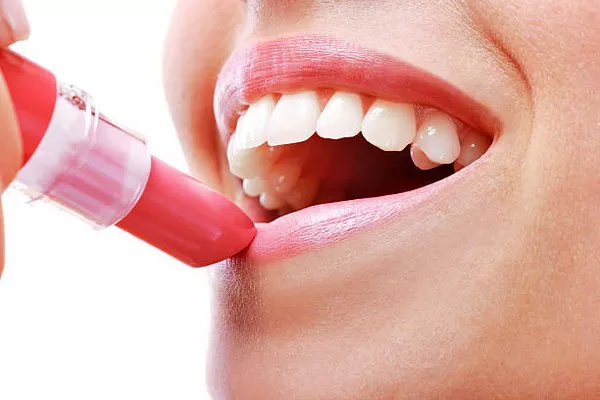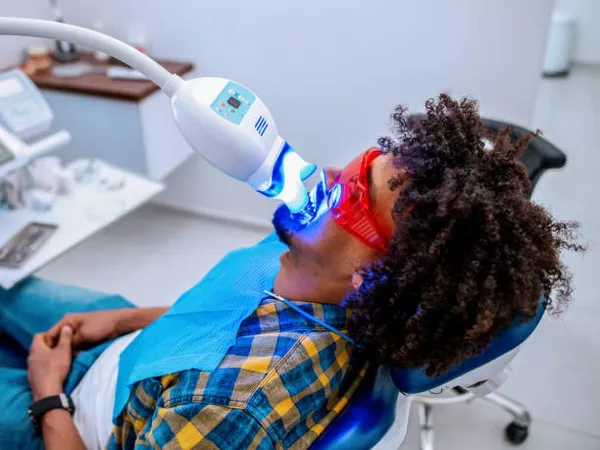Periodontitis is a serious gum infection that destroys the tissues and bone supporting the teeth. It is an advanced stage of gum disease that starts with gingivitis, a milder form of gum inflammation. If left untreated, gingivitis can progress to periodontitis, which can lead to tooth loss. Understanding how to get rid of periodontitis involves exploring its symptoms, diagnosis, treatment options, and prevention strategies.
Symptoms of Periodontitis
Early Warning Signs
Periodontitis often develops gradually, making it important to recognize early symptoms:
Persistent Bad Breath: Chronic halitosis may indicate underlying gum issues.
Swollen or Bleeding Gums: Gums may bleed during brushing or flossing and appear swollen.
Painful Chewing: Discomfort or pain while eating can signal gum disease.
Loose or Shifting Teeth: Teeth may become loose or shift position due to bone loss.
Receding Gums: Gums may start to pull away from the teeth, creating pockets.
Advanced Symptoms
As periodontitis progresses, the symptoms become more severe:
Deep Pockets Between Teeth and Gums: These pockets are a sign of gum tissue damage.
Severe Gum Recession: Significant gum loss exposes more of the tooth or its root.
Loss of Teeth: Advanced periodontitis can lead to tooth mobility or loss.
Recognizing these symptoms early is crucial for timely intervention and treatment.
Diagnosis of Periodontitis
Dental Examination
Diagnosing periodontitis involves several key steps:
Reviewing Medical and Dental History: Understanding your health history and previous dental issues.
Physical Examination of the Gums: Inspecting the gums for signs of swelling, bleeding, or recession.
Measuring Pocket Depths: Using a periodontal probe to measure the depth of pockets between teeth and gums.
Taking X-rays: Radiographic images help assess the extent of bone loss.
Assessment Techniques
Advanced diagnostic methods may include:
Periodontal Probing: Detailed measurement of gum pockets to assess disease severity.
Digital X-rays: High-resolution imaging for a more accurate view of bone loss.
Cone-Beam Computed Tomography (CBCT): 3D imaging for detailed evaluation of bone structure.
Accurate diagnosis helps in formulating an effective treatment plan.
Treatment Options for Periodontitis
Non-Surgical Treatments
Non-surgical treatments aim to clean the affected areas and manage the disease:
Scaling and Root Planing
Procedure: Deep-cleaning technique to remove plaque and tartar from below the gum line.
Purpose: Smooths root surfaces to prevent further plaque accumulation.
Antibiotic Therapy
Local Antibiotics: Applied directly to infected areas to reduce bacterial load.
Systemic Antibiotics: Oral medications may be prescribed to address severe infections.
Improved Oral Hygiene
Brushing: Brush twice daily with fluoride toothpaste to remove plaque.
Flossing: Daily flossing helps eliminate plaque between teeth.
Antimicrobial Mouthwashes: Use mouthwashes containing chlorhexidine or essential oils.
Surgical Treatments
When non-surgical methods are insufficient, surgical options may be necessary:
Flap Surgery
Procedure: Gum tissue is lifted to remove tartar deposits, then repositioned to fit snugly around the teeth.
Benefit: Reduces pockets and improves gum health.
Bone Grafting
Procedure: Adds bone or bone-like materials to areas where bone has been lost.
Purpose: Supports the restoration of bone structure and stability.
Soft Tissue Grafting
Procedure: Grafts tissue from another part of the mouth to areas with significant gum recession.
Benefit: Enhances gum coverage and prevents further recession.
Laser Treatment
Laser therapy offers a modern approach to treating periodontitis:
Laser Scaling and Root Planing
Procedure: Uses lasers to target and remove bacteria and diseased tissue.
Advantage: Minimizes damage to healthy gum tissue.
Laser Gum Surgery
Procedure: Lasers reshape gum tissue and promote healing.
Benefit: Less invasive compared to traditional surgical methods.
See Also: What Kills Gingivitis Bacteria
Prevention of Periodontitis
Maintaining Good Oral Hygiene
Preventing periodontitis involves adopting effective oral care practices:
Brushing
Frequency: Brush at least twice a day.
Technique: Use a fluoride toothpaste and a soft-bristled toothbrush.
Flossing
Daily Routine: Floss once a day to remove plaque from between teeth.
Technique: Use proper flossing techniques to clean below the gum line.
Regular Dental Check-ups
Frequency: Visit your dentist every six to twelve months for professional cleanings.
Purpose: Ensure early detection and treatment of any developing issues.
Healthy Lifestyle Choices
Lifestyle changes can support gum health:
Balanced Diet
Nutrient-Rich Foods: Consume fruits, vegetables, and whole grains to support overall health.
Limit Sugar: Reduce intake of sugary foods and beverages to prevent plaque buildup.
Quit Smoking
Impact: Smoking is a major risk factor for gum disease.
Resources: Seek support from cessation programs if needed.
Manage Stress
Effects: Stress can weaken the immune system and exacerbate gum problems.
Techniques: Practice stress-relief techniques such as exercise and mindfulness.
Home Remedies and Adjunct Therapies
Natural Remedies
Certain home remedies can complement traditional treatments:
Salt Water Rinses
Procedure: Gargle with warm salt water to reduce inflammation and kill bacteria.
Frequency: Use 1-2 times daily, especially after meals.
Aloe Vera
Application: Apply aloe vera gel directly to inflamed gums.
Benefit: May help soothe irritation and promote healing.
Green Tea
Consumption: Drink green tea regularly.
Benefit: Contains antioxidants with anti-inflammatory properties.
Adjunct Therapies
Additional therapies may support gum health:
Probiotics
Usage: Consider taking probiotic supplements to maintain a healthy balance of oral bacteria.
Benefit: May help improve gum health and reduce inflammation.
Essential Oils
Application: Use oils such as tea tree oil in diluted form for its antimicrobial properties.
Caution: Ensure proper dilution and use as directed.
Managing Periodontitis Long-Term
Ongoing Care
Managing periodontitis effectively requires continuous care:
Regular Follow-ups
Frequency: Schedule follow-up appointments with your dentist.
Purpose: Monitor gum health and ensure the effectiveness of treatments.
Home Care Routine
Consistency: Adhere to a consistent oral care routine as advised by your dental professional.
Adaptation: Modify your routine as needed based on your dentist’s recommendations.
Adapting Lifestyle
Making long-term changes can help prevent recurrence:
Healthy Diet
Continuity: Maintain a balanced diet to support gum health.
Monitoring: Regularly review and adjust dietary habits as needed.
Avoid Risk Factors
Ongoing Effort: Continue to avoid smoking and manage other risk factors.
Support: Seek help for any issues that may impact your oral health.
Conclusion
In conclusion, getting rid of periodontitis involves a comprehensive approach combining early diagnosis, effective treatment, and diligent maintenance. The answer to How do you get rid of periodontitis? lies in a mix of non-surgical and surgical treatments, improved oral hygiene, and lifestyle adjustments. By staying proactive and engaged in your dental care, you can manage and potentially overcome periodontitis, leading to healthier gums and a brighter smile. Regular dental visits, proper home care, and lifestyle changes are crucial for long-term success in managing this serious gum condition.
You Might Be Interested In






























